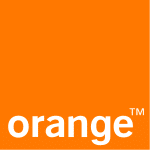Platform
- Commerce Media Platform The connected commerce media environment for the open internet
- Commerce Growth For marketers & agencies looking for automated acquisition & retention
- Commerce Max For brands & agencies looking for retail media on the open internet
- Commerce Grid For media owners, agencies, and retailers looking to connect media and commerce with programmatic
- Commerce Yield For retailers, marketplaces & commerce companies looking to control, scale, and maximize digital asset monetization
Technology
- Addressability Learn about our multi-pronged addressability strategy for the ecosystem
- AI Engine Removes the guesswork to save time and reach your KPIs
- Predictive Bidding Bids based on the predicted value of each user to save you money
- Product Recommendations Intent-based recommendations that drive more sales
- Shopper Graph Connects shopper IDs & commerce data to scale and optimize your campaigns













